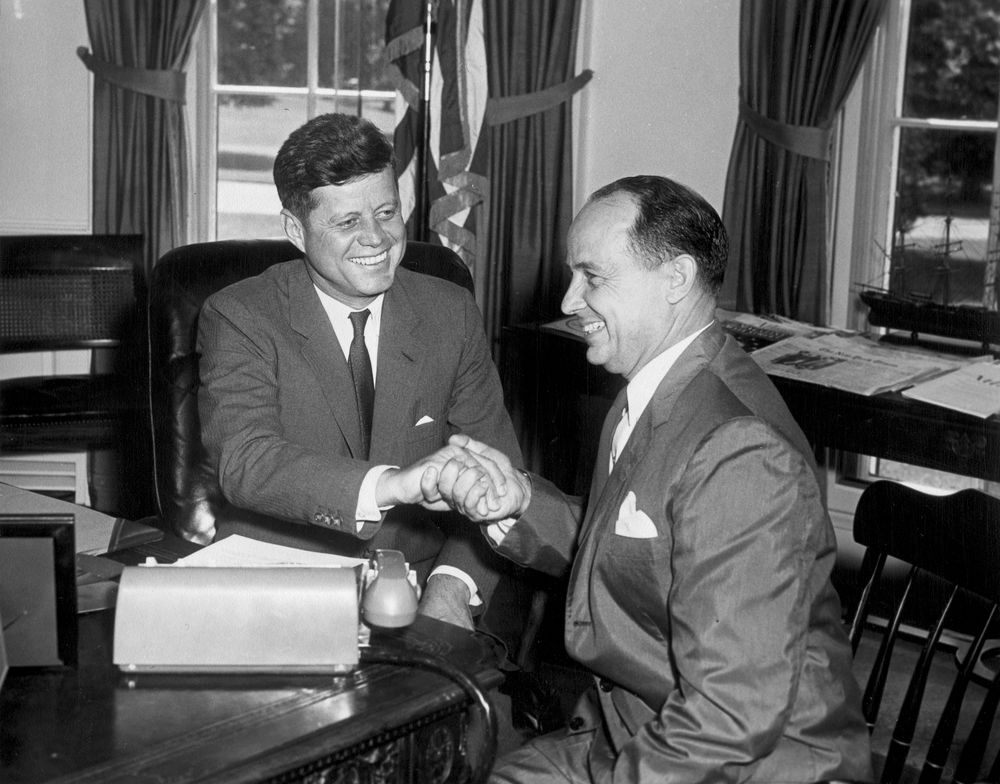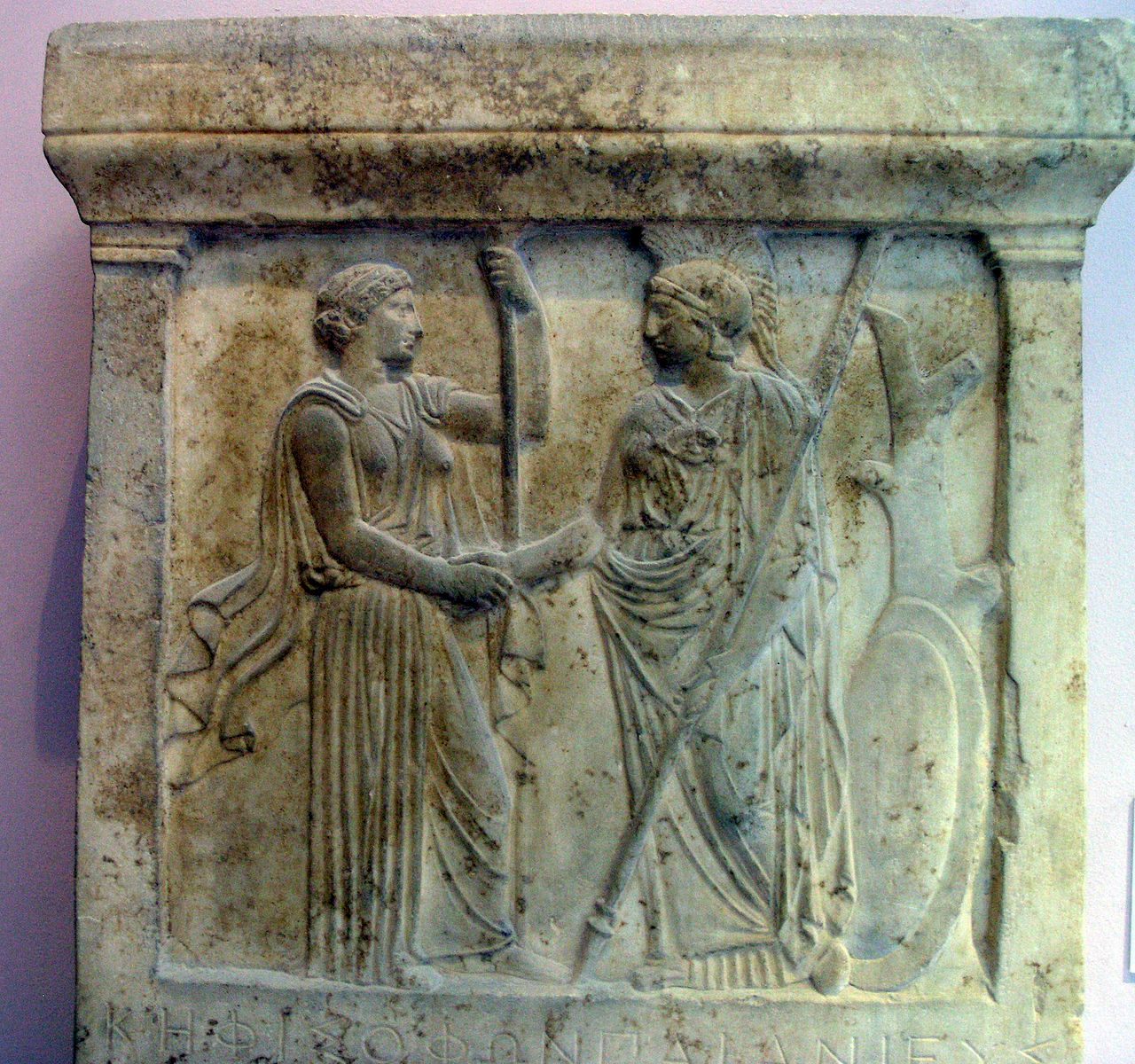The Strange World of Political Handshakes
They date back to ancient Babylonia.

At last night’s Alfred E. Smith Memorial Foundation dinner—a strange electoral tradition where presidential candidates razz each other to benefit Catholic charities—Donald Trump and Hillary Clinton each got a few laughs. But the real surprise came at the end of the night, when the festivities were nearly over. At that point, NPR says, Clinton and Trump decided to shake hands. “The development was announced from the stage, to applause,” the outlet reports.
In most situations, a political handshake would barely merit acknowledgement, let alone applause. But this race is different, because increasingly, the candidates and their families have been keeping their hands to themselves. At the second debate, the families of the nominees planned their entrance choreography so that handshakes would be impossible. Wednesday evening, at the third and final debate, the candidates themselves didn’t shake at all.
No handshake between Donald Trump and Hillary Clinton at the beginning of the third presidential debate.https://t.co/PufKDReglc pic.twitter.com/I7nNQMBtxR
— ITV News (@itvnews) October 20, 2016
After examining footage going back to the first televised debate, in 1976, the Miami Herald found that this was unprecedented. Every set of nominees, from Carter and Ford through Obama and Romney, has always taken a moment to lock hands before attempting to rhetorically eviscerate each other.
It’s strange, but undeniable: even in this age of ceaseless, high-pitched discourse, a handshake—or the lack thereof—speaks volumes. How did this silent action become such an important part of political rhetoric?
Handshaking is such a simple gesture, it’s difficult to say exactly who came up with it. According to the Assyria Times, the ritual dates back at least to 1800 B.C., when Babylonian kings would clasp the hand of a statue of a god, in order to allow the god to “hand over” his authority—ensuring, in other words, a peaceful transfer of power. Ancient Greek monuments feature carvings of gods, soldiers, and couples shaking hands. Greek and Roman handshakers also used the gesture to shake each other down for hidden weapons, and to prove they weren’t carrying any themselves.

Leaders in the Middle Ages had a slightly different way of signaling good intentions—the “Kiss of Peace,” taken from the Bible and generally performed lip-to-lip. “They didn’t use handshakes,” political scientist Tanisha Fazal told the National Post in 2012. “Sometimes there was an exchange of hostages, but most often the kiss of peace was used.”
There’s something informal about a handshake, and George Washington also didn’t like shaking hands with his guests, preferring instead to bow. Thomas Jefferson was the first American politician to bring the handshake to the White House proper, using it to take the office slightly down to earth. Since then, American politicians have made the handshake a campaign staple, bringing it both out to the streets and into diplomatic chambers. Lyndon B. Johnson supposedly shook so many hands that he’d finish out the day with swollen, bruised fingers.
The assumption that everyone deserves a handshake has led to a number of minor political scandals. During his 1963 campaign for District Leader, Ed Koch refused to shake hands with opponent Carmine De Sapio after De Sapio accused him of committing voter fraud by registering dead people. Adlai Stevenson may have lost his campaigns partly due to a palpable distaste for the emptiness of gladhandling. “Perhaps the saddest part of all this is that a candidate must reach into a sea of hands, grasp one, not knowing whose it is, and say, ‘I’m glad to meet you,’ realizing that he hasn’t and probably never will meet that man,” he told a friend in 1952.
And then there are the many, many bungled political handshakes, each of which seems to suggest some kind of communication breakdown—Raul Castro gripping Barack Obama’s bent wrist like a trophy, the Obama/Trudeau/Nieto three-way shown above, John Kerry and Francois Hollande ending up in a kind of swing-dance posture after being unable to decide which greeting was most appropriate.
There are a lot of ways for a handshake, or a non-handshake, to go wrong. But when both people choose to stay away from the gesture, it’s not really a snub—more a mutual decision. At the very least, it’s something they can agree on.










Follow us on Twitter to get the latest on the world's hidden wonders.
Like us on Facebook to get the latest on the world's hidden wonders.
Follow us on Twitter Like us on Facebook